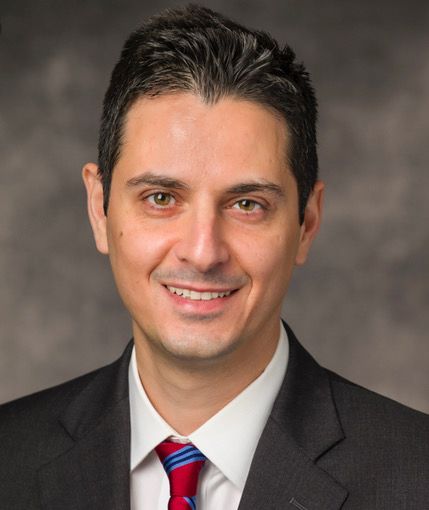Cataract

What is eye cataract?
The lens inside our eye is called the crystalline lens and it is clear. Cataract is the clouding of the natural lens of the eye that usually occurs after the age of fifty. Cataracts can occur in one or both eyes and may be asymmetrical. Without treatment, cataracts worsen over time and can lead to permanent vision loss or even blindness.
What are the causes of cataracts?
As we mentioned above, the natural lens of our eye becomes cloudy as we age, causing a gradual decrease in vision. In addition to age, there are other causes of cataracts, such as:
- Medications (e. Steroids)
- Congenital (at a young age)
- Systemic disease
- Diabetes
- Alcohol abuse
- Prolonged exposure to UV radiation
- Trauma
- Other eye surgery (i.e retinal detachment surgery)
Can we prevent Cataract?
Some preventive measures include:
- Use of a hat that blocks ultraviolet (UV) sunlight
- Using sunglasses that block UV sunlight
- Stop smoking
- Change diet to include green leafy vegetables and fruits.
How do I know I have cataracts? What are the symptoms?
Common symptoms of cataracts are:
- Blurred vision (as if seeing through cloudy glass).
- Sensitivity to light reflection, especially at night.
- Colors that appear faded.
- Temporary improvement of near vision with frequent changes in the prescription of glasses or contact lenses.
- Double images.
- Difficulty driving at night.
Treatment & Treatment with Cataract Surgery
Modern cataract surgery is minimally invasive and through a 2.2 mm incision in the cornea we can remove the cloudy natural lens, the cataract. We then insert a clear artificial lens, known as an intraocular lens. The surgery is mostly performed under local anesthesia. At the end of the operation usually no suture is placed, as a result of which the patient’s recovery is faster and painless.
Cataract surgery is the most performed operation. The reason is that with age, the crystalline lens inside the eye becomes cloudy, with the consequence that the visual acuity decreases, and the patient does not see clearly. But there are other aggravating factors for the creation of cataracts beyond age, less important, such as exposure to the sun’s ultraviolet rays (UV), genetic factors, as well as some injury to the eye that is the cause of traumatic cataracts.
Cataract surgery is performed under local anesthesia by putting drops in the eye and takes an average of 20 minutes. The cooperation of the patient is necessary because the patient should not move during the surgery. Sedation is usually used by the anesthesiologists who are present throughout the operating, but the patient is not completely asleep. During the surgery the patient is covered with sterile drapes and therefore the patient should not be claustrophobic. For cataract surgery, special microscopes are used, and the surgeon uses ultrasound to break up the cataract and suction it through a 2.2 mm incision. The use of laser is not particularly widespread for cataract surgery since all it offers is the creation of incisions in the cornea and the periphery of the lens. The main lens should break with the ultrasound and shatter. At the end of the cataract surgery, an acrylic lens is placed inside the eye.
Nowadays, cataract surgery has also evolved into refractive surgery.
What does this mean;
With special measurements, the surgeon can accurately calculate the length of the eye and correct any myopia, hypermetropia, astigmatism and presbyopia. For this reason, special (premium) intraocular lenses are used, which are customized to each patient. After surgery, we advise patients not to lift weights, use drops that we prescribe, and keep their eye clean away from dust and dirt. Also, since the cataract surgery is performed without the use of stitches, the patient should not rub the eye, and water should not enter the eye for 10 days. Cataract surgery is perhaps the most successful operation in medicine with a success rate of 98% and an infection rate of less than 1/1000.
Before surgery
The pre-operative check-up includes tests concerning the eye (biometrics, which calculates the dimensions of the eye), and your general state of health (general blood and electrocardiogram).
After surgery
Immediately after the operation, the eye can be left either open or closed with patch which you can remove within a few hours. Make sure you always have clean hands. Sometimes you may have a foreign body sensation for a few hours after the operation or mild pain. The use of a painkiller (paracetamol) is usually enough to relieve you of these symptoms. During the 1st postoperative week, any intense activity is discouraged, and we should also not lift weights over 3 kg.
*During the early postoperative period (2 to 7 days after the operation) if the eye shows any of the following symptoms:
- Intense Redness
- Pain with sensitivity to light
- Vision loss
You must contact your eye doctor IMMEDIATELY for advice.
Cataract Surgery Success
Cataract surgery is considered the surgery with the highest success rate of 98%. After the operation, the patients’ quality of life improves significantly. Patients have a better quality of vision and can and perform daily activities more safely. Also, the surgery can correct refractive abnormalities to some extent and the patient has less dependence on glasses, for example myopia or presbyopia.
Intraocular lenses
Simple intraocular lenses
Simple intraocular lenses are the main category of lenses we use at the end of cataract surgery. They are a reliable solution for patients without high astigmatism.
Toric intraocular lenses for astigmatism correction
Toric intraocular lenses are a reliable solution for patients with astigmatism, as they are specially designed to correct astigmatism during cataract surgery. The selection of the lens is made after special measurements of the curvature of the patient’s cornea (corneal topography) and requires a special order.
Multifocal intraocular lenses for presbyopia correction
Multifocal intraocular lenses provide near, intermediate, and far vision correction, greatly reducing the need for glasses or contact lenses for most patients. Some toric multifocal intraocular lenses can also correct astigmatism.
Choosing a multifocal intraocular lens is not suitable for all patients. The decision to insert a multifocal intraocular lens is made after special examinations (corneal topography, macular coherence optical tomography) and discussion with the ophthalmologist.
What are the costs and prices for cataract surgery?
The cost of the operation varies. Several factors can alter the cost of the operation including the selection of the intraocular lens. If you want to know more details about the cost of the operation, please contact us.


